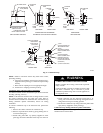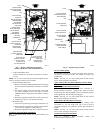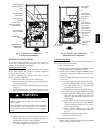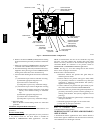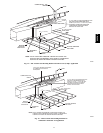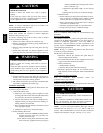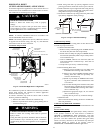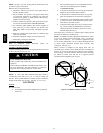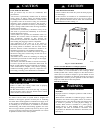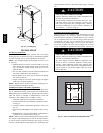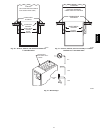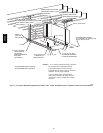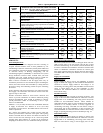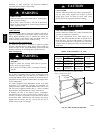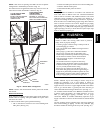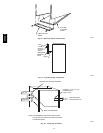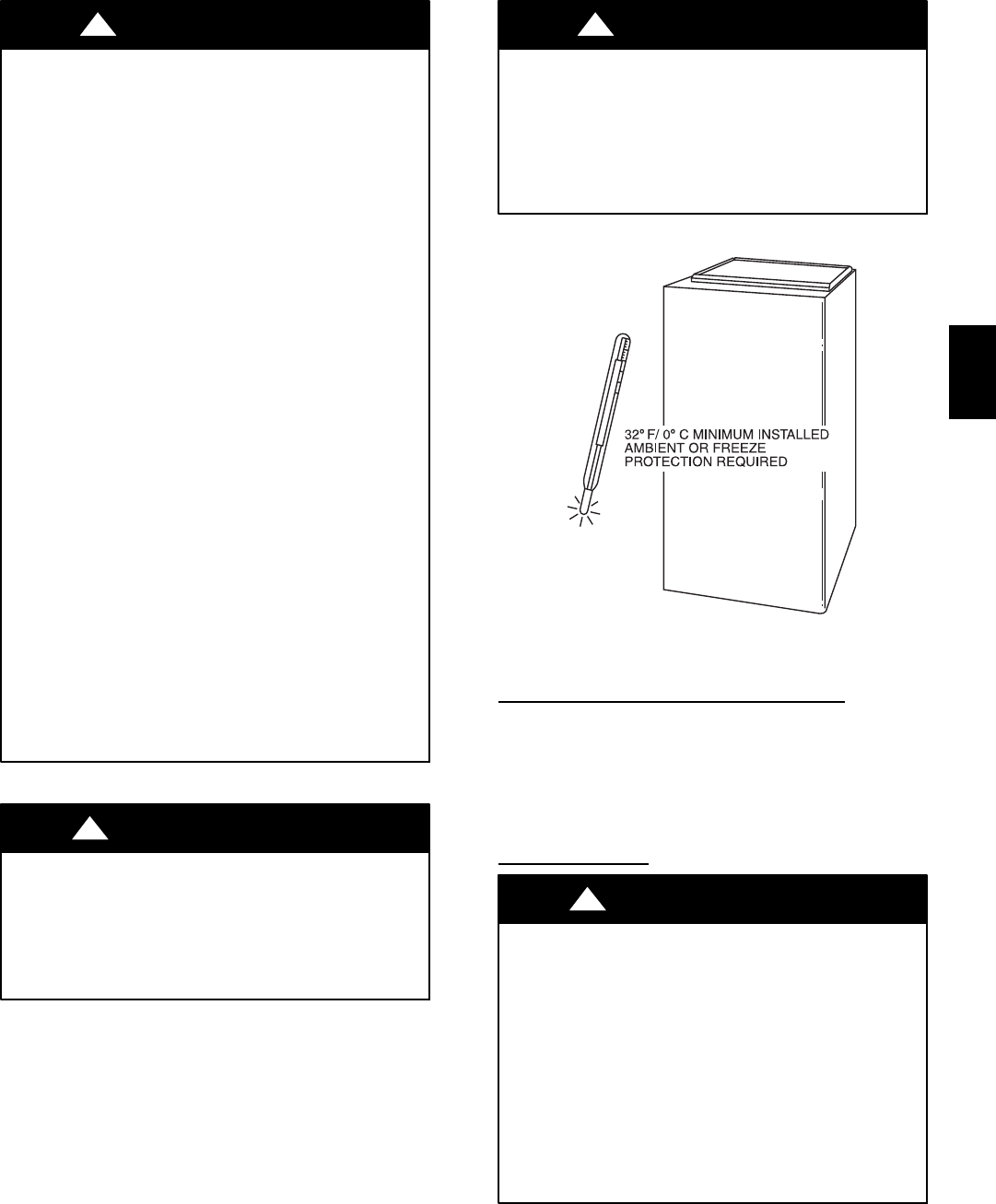
17
UNIT DAMAGE HAZARD
This gas furnace may be used for construction heat
provided that:
--The furnace is permanently installed with all electrical
wiring, piping, air filters, venting and ducting installed
according to these installation instructions. A return air duct
is provided, sealed to the furnace casing, and terminated
outside the space containing the furnace. This prevents a
negative pressure condition as created by the circulating air
blower, causing a flame rollout and/or drawing combustion
products into the structure.
--The furnace is controlled by a thermostat. It may not be
“hot wired” to provide heat continuously to the structure
without thermostatic control.
--Clean outside air is provided for combustion. This is to
minimize the corrosive effects of adhesives, sealers and
other construction materials. It also prevents the
entrainment of drywall dust into combustion air, which can
cause fouling and plugging of furnace components.
--The temperature of the return air to the furnace is
maintained between 55_F(13_C) and 80_F(27_C), with
no evening setback or shutdown. The use of the furnace
while the structure is under construction is deemed to be
intermittent operation per our installation instructions.
--The air temperature rise is within the rated rise range on
the furnace rating plate, and the firing rate has been set to
the nameplate value.
--The filters used to clean the circulating air during the
construction process must be either changed or thoroughly
cleaned prior to occupancy.
--The furnace, ductwork and filters are cleaned as necessary
to remove drywall dust and construction debris from all
HVAC system components after construction is completed.
--After construction is complete, verify furnace operating
conditions including ignition, input rate, temperature rise
and venting, according to the manufacturer’ s instructions.
CAUTION
!
FIRE OR DEATH HAZARD
Failure to follow this warning could result in property
damage, personal injury, or death.
Do not install furnace on its back. (See Fig. 16.) Safety
control operation will be adversely affected. Never connect
return--air ducts to back of furnace.
!
WARNING
The furnace and its return air system shall be designed and
installed so that negative pressure created by the air circulating
fan cannot affect another appliance’scombustion air supply or act
to mix products of combustion with circulating air, and that the
air circulating fan of the furnace, if installed in an enclosure
communicating with another fuel--burning appliance not of the
direct--vent type, shall be operable only when any door or panel
covering an opening in the furnace fan compartment or in a return
air plenum on ducts is in the closed position.
UNIT DAMAGE HAZARD
Failure to follow this caution may result in minor property
or unit damage.
If these furnaces are installed in an unconditioned space
where ambient temperatures may be 32_F(0_C) or lower,
freeze protection measures must be taken. See Condensate
Drain Protection section and Fig. 17.
CAUTION
!
A07911
Fig. 17 -- Fr eeze Pr otection
Furnace Location Relative to Cooling
Equipment
The cooling coil must be installed parallel with or on downstream
side of furnace to avoid condensation in heat exchanger. When
installed parallel with a furnace, dampers or other means used to
control f low of air shall be adequate to prevent chilled air from
entering furnace. If dampers are manually operated, they must be
equipped with a means to prevent operation of either unit unless
damper is in full--heat or full--cool position.
Hazardous
Locations
FIRE, EXPLOSION, INJURY OR DEATH
HAZARD
Improper location or inadequate protection could result in
fire or explosion.
When furnace is installed in a residential garage, it must be
installed so that burners and ignition s ources are located a
minimum of 18 in. (457 mm) above floor. The furnace must
be located or protected to avoid physical damage by
vehicles. When furnace is installed in a public garage,
airplane hangar, or other building having a hazardous
atmosphere, unit must be installed in accordance with
requirements of National Fire Protection Association, Inc.
(See Fig. 5.)
!
WARNING
355CAV



